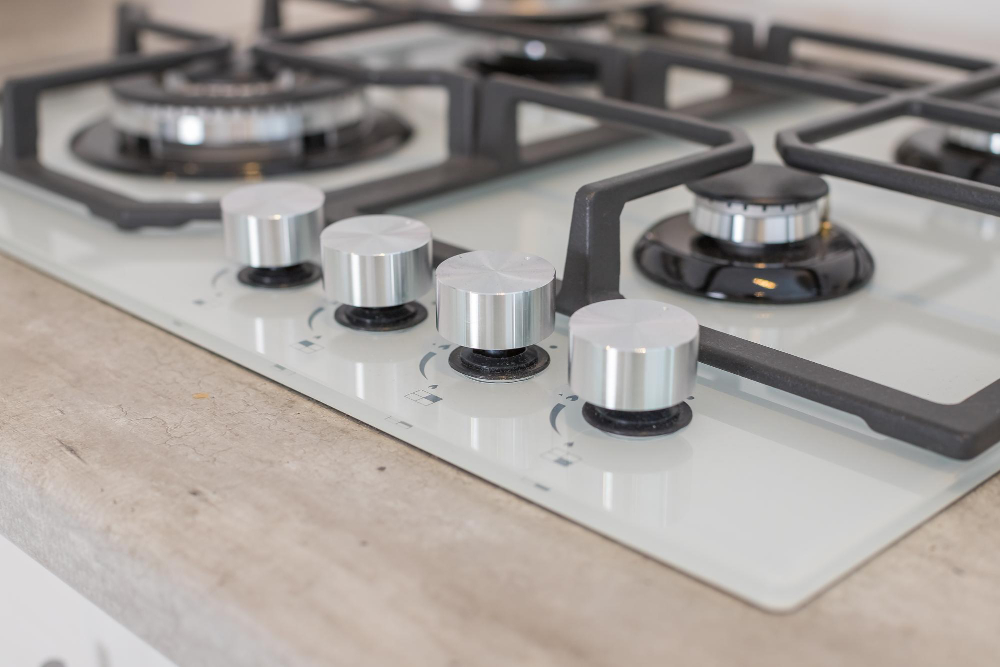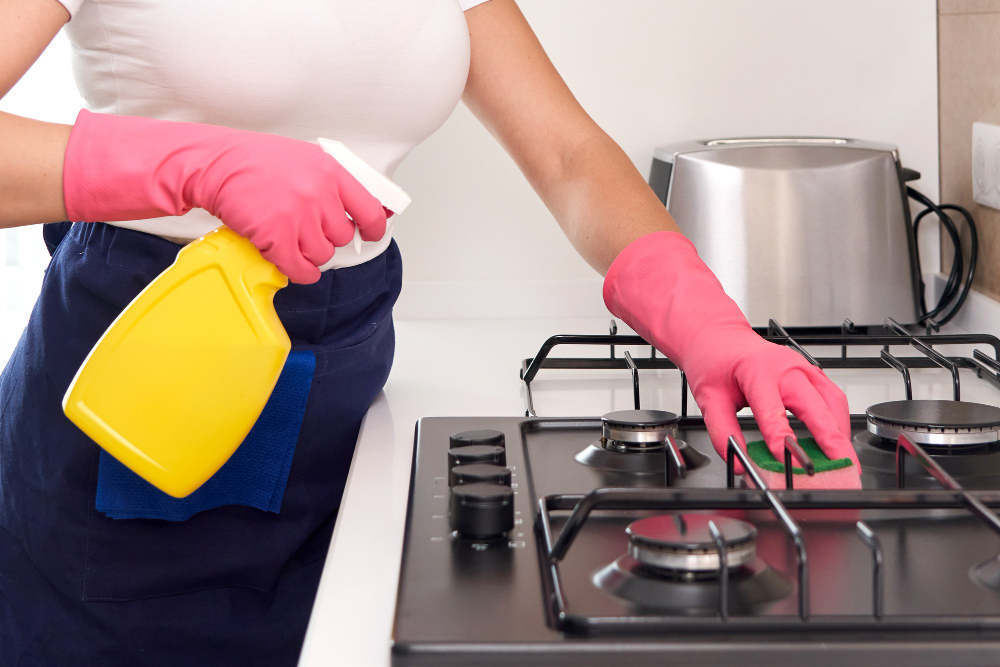Last updated on
Use these seven simple tips to keep your gas stove clean. Read on!
Cooking holds immense significance. For many households, preparing food is a way to connect with heritage, traditions, and shared meals with loved ones.
Gas stoves, being a popular choice in households, are at the heart of these culinary experiences. However, the regular use of these appliances leads to inevitable dirt and grime buildup.
What's Inside
Why Is It So Important–and Difficult–to Keep Your Gas Stove Clean?

Keeping your gas range clean is of paramount importance for several reasons. Firstly, a clean gas stove can perform efficiently by allowing for precise temperature control during cooking. Aside from enhancing the quality of meals, keeping your gas stove in pristine condition also reduces the risk of accidents or malfunctions that can be caused by clogged burners or blocked airflow.
Secondly, a clean gas stove promotes a hygienic cooking environment. By thoroughly cleaning your gas range regularly, you are preventing the buildup of grease, food residue, and potentially harmful bacteria.
Unfortunately, oily ingredients are prevalent in traditional cuisine, so stubborn stains and grease buildup are common sights in gas ranges. Additionally, gas stoves often have complex designs, with multiple components and internal parts, that can make thorough cleaning a time-consuming task.
If all of this sounds daunting, don’t worry. Below, we will provide practical tips that you can use to keep your gas stove clean and working perfectly.
Preparing the Gas Stove for Cleaning

Before diving into the cleaning process, it’s essential to prepare the gas stove adequately to ensure everyone’s safety. Start by making certain that the stove is turned off and completely cooled down to avoid any potential burns.
Then, remove any loose debris or food particles from the stovetop and burners using a soft brush or cloth. This step will make it easier for you to reach surfaces that need thorough cleaning. Additionally, disconnect the gas supply or turn off the gas valve for added safety and to prevent accidental ignition during the cleaning process.
Gather All the Essential Materials for Cleaning a Gas Stove Before Starting
Having the right materials at hand makes the cleaning process more efficient. Gather the following items before starting:
- A mild kitchen cleaner or warm soapy water that will serve as the primary cleaning solution
- A non-abrasive sponge or cloth to avoid scratching the surfaces of the stove while cleaning
- Small brushes for cleaning hard-to-reach areas, such as burner ports or crevices
- Microfiber cloth for drying and polishing the gas stove after cleaning
- Vinegar or baking soda for tackling tough stains or grease buildup
Dismantle the Removable Parts of the Stovetop and Go Down from There
After taking care of the loose debris from the surface of the stovetop, it’s time to give it a thorough clean. Start by removing any detachable burner grates, caps, or pans. You can deal with these components later. Then, scrub the stovetop with a sponge or cloth soaked in warm soapy water, paying attention to spills, stains, and grease.
Once these problem spots have been taken care of, rinse the stovetop thoroughly with clean water and dry it with a microfiber cloth.
Take Care of the Individual Components of the Stove for a Thorough Clean
After you’re done with the stove’s main body, it’s time to focus on the components you removed from the stove. First, soak the burner grates and caps in warm soapy water for a few minutes.
Then, scrub them using a non-abrasive sponge or brush to remove any food residue or grease that may have gotten stuck in them. Finally, rinse the grates and caps thoroughly, ensuring all soap or cleaning solutions are removed. Let these parts dry completely before placing them back on the stove.
Go After the Burner Ports as Well to Clear Any Blockages
It’s not just the parts of the stove where splatters and food debris often end up that need cleaning. You also have to clear the ports to ensure that gas will flow properly and the stove will work efficiently. Use a small brush, such as a toothbrush or a bottle brush, to clean the burner ports.
Gently scrub away any debris or residue that may be blocking them. For good measure, wipe the ports with a damp cloth to remove any loosened dirt or remaining cleaning solution.
Use a Paste of Baking Soda and Water When Dealing with Stubborn Stains
Soapy water alone may not be able to take care of tough stains on the stovetop or burners. If a stain stays visible after your initial cleaning efforts, treat it with a paste of baking soda and water.
Apply the paste to the stained areas, let it sit for a few minutes, then scrub the area gently with a non-abrasive sponge or brush. Just like the other parts of the stove, rinse the area thoroughly and dry it with a microfiber cloth.
Remove Grease Buildup Using Vinegar and a Cloth
Another common issue that you may face when cleaning your stove is grease buildup. To tackle this specific problem, apply vinegar to a soft cloth or sponge and wipe the affected area. Just like the baking soda paste, let the vinegar sit in the affected area for a few minutes. Then, scrub and rinse the spot with clean water before drying it with a soft microfiber cloth.
Cleaning your gas stove regularly is a good practice that will preserve the look of your kitchen. At the same time, it will also optimize your cooking processes and contribute to making your kitchen a more economical and hygienic place.
Follow the tips outlined above to clean your gas range, improve its performance and service lifespan, and continue having an enjoyable cooking experience.




